Oct 12, 2022
Automated Intelligence vs Artificial Intelligence
Automation and AI are two of the most common buzzwords that come up regarding the digital transformation and modernisation of organisations. However, it’s often hard to equate what high-level explanations of these technologies mean regarding how it affects your day-to-day operations.
To make matters worse, there’s now a new buzzword that businesses need to get familiar with: Intelligent Automation, or IA. It’s no wonder that these technologies are often misunderstood or referred to interchangeably.
While automation aims to make our processes faster and more efficient, AI aims to make them smarter and more valuable. Intelligent Automation is the latest revolution that promises the best of both worlds if organisations can get it right.
What is Automated Intelligence?
Intelligent Automation (IA) is the use of automation technologies, such as artificial intelligence (AI), business process management BPM, and robotic process automation (RPA), to achieve end-to-end business process automation and accelerate digital transformation. The goal is to streamline and scale decision-making within the organisation by freeing up resources and eliminating operation efficiencies.
Simply put, it’s the use of cutting-edge technologies to solve low-level business problems. For example, Machine Learning, Natural Language Processing, Structured Data Interaction, Intelligent document processing, and RPA. Due to its reliance on intelligence-based technologies, IA is also sometimes called cognitive automation.
Typically, five components come together to enable Automated Intelligence:
- Artificial intelligence (AI)
- Robotic Process Automation (RPA)
- Business Process Management (BPM)
- Tools, and
- Data
Organisations use IA in a wide range of applications where speed, accuracy, and scalability are of the essence.
Benefits of Automated Intelligence?
- Reduce operational costs: According to KPMG, organisations can reduce costs by up to 75% by implementing IA. Roland Berger estimated that organisations could reduce operating costs by 40%.
- Save time: IA frees humans from managing time-consuming and repetitive processes, especially back office tasks. It can reduce the time spent on processes by 40-70%.
- Reduce the impact of human error: A high volume of repetitive tasks creates the perfect recipe for human error. Automated, rule-based processes are much less error-prone, especially regarding governance and compliance measures.
- Maximizing the value of business data: Bad data costs businesses as much as $9.7 billion and the economy $3 trillion annually. IA helps companies collect, process, store, reconcile, and analyse data at scale to higher standards.
- Improving customer experience: By accelerating speed-to-market and data quality, IA helps businesses deliver improved and more valuable customer experiences. In turn, this increases growth and revenue.
What is Artificial Intelligence (AI)?
A simple definition of AI would be a collection of technologies that work together to mimic human intelligence. We typically think of AI in terms of being able to mimic human behaviour.
However, the vast majority of AI systems used by businesses today are deployed to solve specific problems. Such tools are tasked with solving complex problems that would typically require human-level intelligence. The general intelligence needed to mimic human behaviour is not necessarily efficient or desirable in these circumstances.
In theory, there are three things an AI should be able to do:
- Analyze data and identify patterns
- Learn from its previous actions or experiences
- Self-select responses or strategies based on desirable/non-desirable outcomes.
That’s why AI often goes hand-in-hand with machine learning. Machine learning defines the ability of computers/machines to learn to solve a problem without being explicitly programmed to.
AI is generally divided into three categories:
- Artificial narrow intelligence (ANI) – AI that’s designed to specialise in a specific task or field.
- Artificial general intelligence (AGI) – AI that can adapt and showcase expertise in various situations, like humans.
- Artificial superintelligence (ASI) – AI that can master a vast range of specialised disciplines, exceeding human capabilities.
Benefits of AI
As you can see, the benefits of AI deliver many of the same benefits as intelligent automation. AI helps businesses achieve these improvements from a different angle:
- Enhances decision-making: Thanks to machine learning, AI can surpass human decision-making in specialised areas. AI systems can coordinate data delivery, analyse trends, develop data consistency, provide forecasts, and quantify uncertainties to make accurate decisions.
- Completes tasks faster: By leveraging the processing power of modern computers, the idea is that AI can learn to tackle complex problems in much less time than a human would. It can also scale problem-solving by multi-tasking complex processes.
- Improve customer experiences: For example, chatbots combining AI with Natural Language Processing (NLP) can give customers human-like advice or guidance without waiting for a live operator. Endpoint AI can also give customers access to advanced computing fast and on-demand.
- Minimizing errors: The more complex the problem, the more likely errors will occur. AI minimises errors thanks to fewer data processing mistakes and greater efficiency.
The Difference Between Automated Intelligence and AI FAQ
You probably still have several questions surrounding automation, AI, and IA. Here are some answers to the most frequently asked questions regarding the subject:
What is RPA? Is it the simplest form of automation?
If you’ve done some reading on the subject, you’ve probably also seen RPA. RPA, or robotic processing automation, is software used to create what are essentially software-based robots or bots. They are used to automate simple software tasks and mimic human actions at a basic level.
RPA bots tend to focus on carrying out repetitive, rule-based tasks. An RPA bot typically specialises in carrying out specific tasks using specific technologies.
In most ways, Intelligent Automation is a combination of RPA and AI. AI allows RPA bots to execute more complex processes while using the same ability to carry out human-like actions.
What are automation services?
Also called “service orchestration,” service automation involves coordinating multiple processes to produce the desired result without human action. Service automation is more complex than task automation, as a service can consist of various tasks working in tandem. However, it’s less advanced than intelligent automation because it doesn’t require advanced decision-making.
Still, automated services are nearly ubiquitously used by businesses today to streamline and simplify many everyday activities.
Examples of automated services:
- Submitting a repair request via a digital portal.
- Booking a conference room or event space in advance.
- Ride-sharing or food delivery services.
- Online streaming platforms, such as Netflix.
- Automated AirBnB check-ins/check-outs.
Is artificial intelligence part of automation?
No, a system can be automated without using artificial intelligence. However, as mentioned, AI is one of the core components of automated intelligence and can be considered a pre-condition for it.
Intelligent Automation combines the best aspects of automation with those of AI. It gives automated processes the ability to “think” and “learn” to improve their accuracy, efficiency, and value continuously.
“Intelligence” is the operative word that connects AI with IA. Without AI, automation is limited to only the most low-level, mundane tasks. Intelligent automation, on the other hand, leverages the power of AI to solve higher-order problems at scale.
What are examples of AI?
Here are some of the most common examples of how AI is being implemented today:
- AI-powered media analysis: AI can be used to automatically determine the contents of an image, video, audio, or other media file. It can then automatically tag, sort the media or create metadata regarding it. For example, detecting media that may contain adult content to block it from being uploaded to your site.
- Medical diagnosis: Specialized AI systems can help doctors diagnose patients by analysing symptoms, blood samples, CT scans, MRIs, etc.
- Autonomous driving: Self-driving or completely driverless cars are powered by AI systems that can navigate a car based on environmental sensors, GPS information, etc.
- Fraud: AI is increasingly used in banking and financial services to detect fraud. AI can assess transaction data and compare it to past fraud data to flag suspicious behaviour.
- Insurance: Assessing risk and calculating rates based on it demands extremely complex calculations dependent on many data points. This is the type of computational exercise AI excels at.
- Engineering: AI can use past models to validate designs before they are built and tested. For example, specialised AI systems can use information from wind tunnel tests to assess the aerodynamics of a new aeroplane design.
What are intelligent automation examples?
- Manufacturing: Speed up production by automating repetitive tasks and avoiding human error in daily processes.
- Insurance: Insurers can use IA to calculate payments, make predictions used to calculate rates, and maintain governance and compliance. IA allows them to use the analyses done by AI to execute these operations at scale for multiple contracts simultaneously. Firms can use this to create automated document generation workflows.
- Data capture: Intelligent automation can speed up capturing, organising, storing, and assessing huge amounts of data. For example, you can automatically extract remittance and payment data from submitted documents and integrate it into your financial systems.
- Customer communication management: IA tools can generate personalised and customised content and send it to individual customers. The system can ensure that the right people get the correct information at the right time.
Conclusion
In summary, while IA and AI are two separate disciplines, they are tightly coupled. In some ways, IA is simply techniques and technologies that can be used to scale AI’s decision-making powers to operate under high-volume conditions.
Combining automation and AI can empower businesses by freeing their workforce to deal with strategic challenges. At the same time, it will increase productivity, speed-to-market, and efficiency while reducing costs, time spent on processes, and the risk of human error.
If you are interested in learning more about our Intelligent Automation services, contact us for more information.


